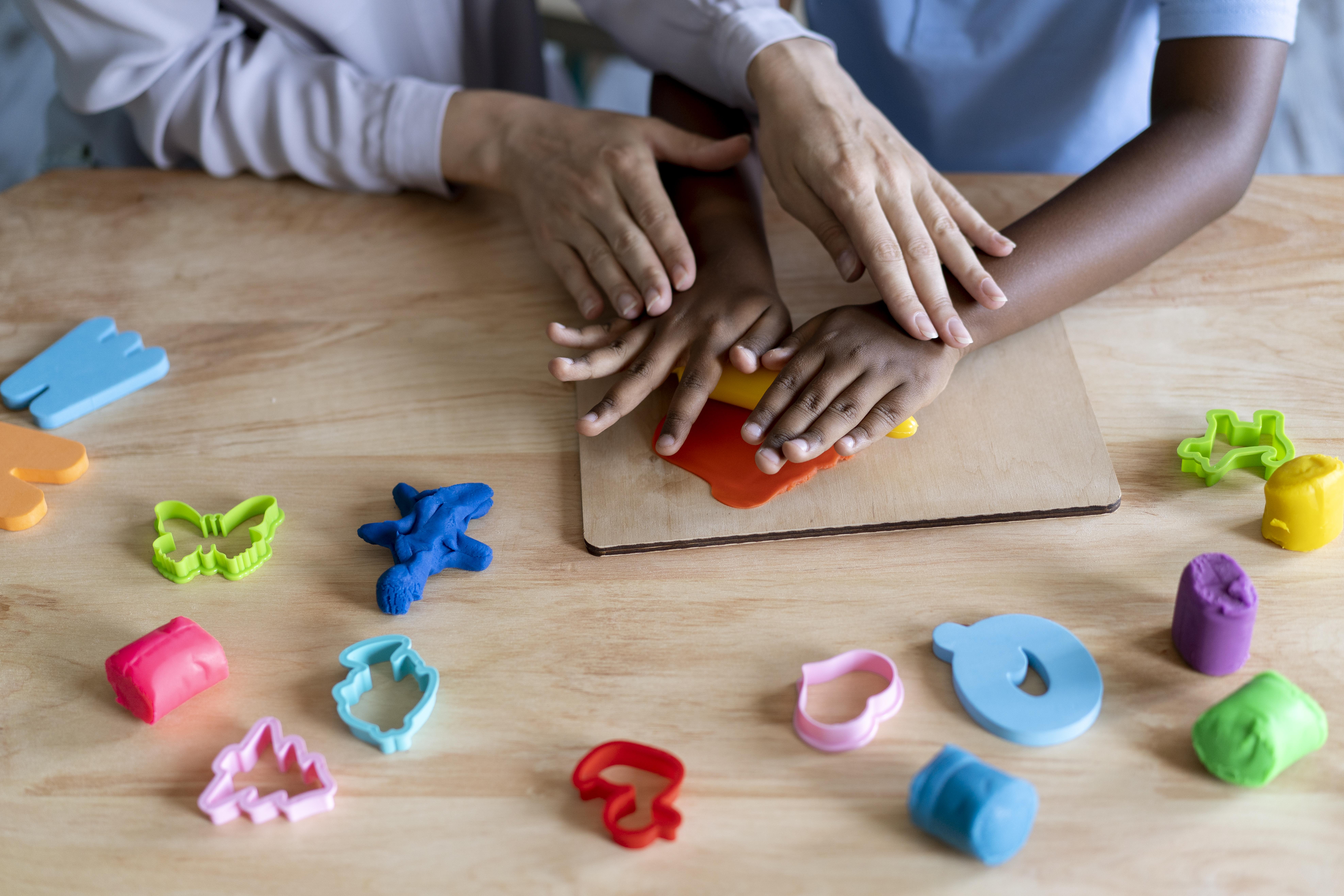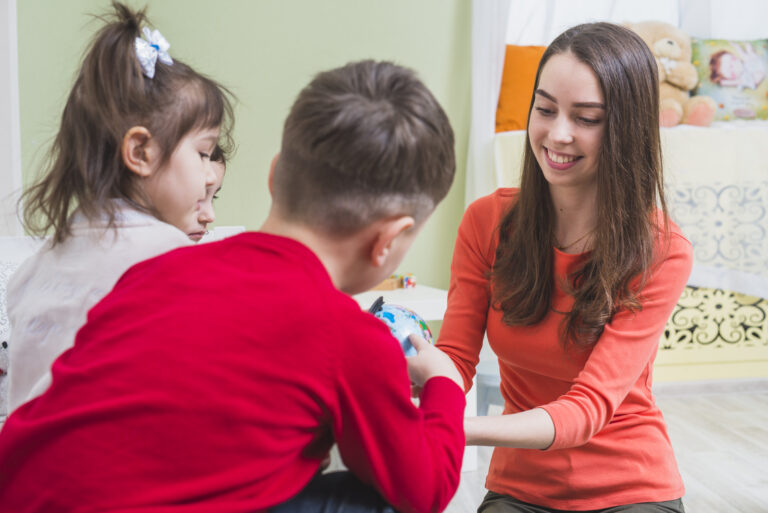Sensory Processing Awareness Month: What It Means and How to Support Sensory Differences
September is Sensory Processing Awareness Month, a time when families, educators, and communities come together to recognize the unique ways people experience the world through their senses. While everyone interacts with their environment through sound, touch, taste, sight, and movement, not all brains interpret these signals in the same way. For many children and adults, particularly those on the autism spectrum, sensory processing differences shape how they engage with everyday life. A school for autism in Farmers Branch can provide the specialized support and strategies needed to help students navigate these challenges and thrive in their learning environments.
At It’s a Sensory World!, we know how crucial it is to provide not only awareness but also practical support for individuals and families navigating sensory differences. This month offers the opportunity to raise understanding, reduce stigma, and build environments where every child and adult feels valued and accepted.
What Sensory Processing Means
Sensory processing is the way the nervous system receives information from the senses and translates it into a response. For most people, this happens automatically and smoothly. A sound can be tuned out when it’s not important, clothing that might be mildly irritating is easy to ignore, and visual clutter doesn’t completely overwhelm focus.
For those with sensory processing challenges, however, the brain can become flooded with signals or fail to detect them entirely. A tag inside a shirt might feel unbearable, a grocery store’s background noises may trigger panic, or bright lights in a classroom might seem unbearable. On the other hand, children may crave such input—seeking constant movement, spinning, or pressing their bodies against surfaces for comfort.
Sensory Processing Disorder Explained
Sensory Processing Disorder (SPD) describes the difficulty some individuals have in receiving, interpreting, and responding to sensory input. The brain either overreacts, underreacts, or struggles to organize multiple inputs at once. While SPD isn’t currently listed in the DSM-5, its impact is widely recognized by therapists, educators, and medical professionals who see how these differences affect learning, relationships, and behavior.
Some children are easily overwhelmed by noises, lights, or textures, while others may barely notice sensory input unless it is extremely strong. Still others actively seek stimulation, rocking, spinning, or tapping to organize their bodies and brains. These varied responses remind us that no two individuals experience sensory processing in exactly the same way. Each person’s experience is unique, and each strategy for support needs to be personalized.
Sensory Differences and Autism
For autistic individuals, sensory differences are often central to daily life. Sensory input can either enrich experience or lead to discomfort and distress. A bright classroom may seem painfully intense, or certain food textures might feel impossible to tolerate. Loud sudden sounds—like a fire drill—can cause anxiety, while repetitive sensory activities like hand-flapping or watching lights spin may bring comfort and stability.
Acknowledging these differences is a key part of understanding autism. Sensory differences are not a weakness to be solved, but part of a neurodiverse way of interacting with the world. When teachers, parents, and communities show flexibility, autistic individuals are more likely to thrive and feel included in meaningful ways.
Why Raising Awareness Matters
One of the most important lessons of Sensory Processing Awareness Month is compassion. Sensory differences are often invisible to the casual observer, which leads to misunderstanding. A child who covers their ears during a school concert might be labeled disruptive when, in reality, they are simply overwhelmed by the noise. A student who refuses to eat cafeteria food could be dismissed as picky, rather than seen as someone struggling with texture or smell sensitivities.
By reframing our understanding, we can begin responding more accurately to behaviors. Parents and caregivers are not trying to make excuses; they are trying to explain their child’s reality. Awareness campaigns in September help families feel seen and help communities build spaces where sensory challenges are accepted, not judged.
Creating Sensory Supports at Home
Supporting sensory needs at home doesn’t necessarily mean a total lifestyle change; often, small and thoughtful adjustments make the biggest difference. Many families choose to set up a calm corner in their homes—a cozy, quiet space where children can retreat when they feel overwhelmed. Soft blankets, dim lighting, noise-canceling headphones, or weighted items can turn a simple nook into a sanctuary for regulation.
Parents can also make home environments more comfortable by respecting a child’s clothing and food preferences. If a child insists on tag-free shirts or avoids rough fabrics, accommodating this preference can prevent hours of unnecessary distress. Similarly, pressuring picky eaters often escalates struggles at the dinner table; gentle exposure over time works far better than force.
Beyond the environment, establishing predictable routines is helpful. Structured mornings and bedtimes supported by small sensory breaks—like bouncing on a trampoline, swinging, or stretching—prepare children for smoother transitions throughout the day. Noise reduction strategies, like using soft music or white-noise machines, can also help children who are sensitive to sudden or background sounds.
Supporting Sensory Needs in the Classroom
Educators play a vital role in creating environments where all children can succeed. For students with sensory differences, thoughtful classroom strategies prevent unnecessary struggles and allow them to participate fully. Some teachers reduce harsh lighting by using soft lamps or filters on fluorescent bulbs. Others provide flexible seating—like bean bags or wiggle stools—so children can stay regulated while learning.
Communication with parents is critical, since families know best what strategies work for their child. Formal supports, such as an Individualized Education Plan (IEP) or 504 Plan, can ensure that sensory breaks and alternative workspaces are officially part of a child’s school day. Teachers who incorporate movement activities between lessons recognize that sensory input supports learning rather than distracts from it.
Even small accommodations, like allowing a child to use headphones during noisy assemblies or letting them eat in a quieter environment, can be the difference between participation and isolation. Schools that embrace sensory-friendly approaches don’t just help individual students—they create classrooms that are more welcoming for everyone.
Celebrating Strengths, Not Just Challenges
It is easy to focus only on the difficulties of sensory processing, but differences also bring unique strengths. Many individuals with sensory sensitivity have a remarkable eye for detail, deep creativity, or a profound appreciation for patterns, sounds, or art. Children who love to explore sensory input often bring curiosity and enthusiasm to their learning environments.
Reframing sensory differences as part of neurodiversity, rather than a problem to be fixed, helps children develop self-esteem and resilience. Communities thrive when every child feels valued exactly as they are. Celebrating strengths is just as important as supporting challenges.
Moving Beyond Awareness Toward Advocacy
While Sensory Processing Awareness Month provides a time to raise visibility, long-term advocacy is what truly changes lives. Parents and caregivers can advocate in schools by educating teachers about sensory strategies or encouraging sensory-friendly field trips. Community members can push for inclusive spaces at museums, libraries, or theaters, ensuring families have equal access to enriching activities.
Many businesses are also beginning to recognize the importance of sensory inclusion. Grocery stores and movie theaters are introducing sensory-friendly hours with dimmed lights and lower sound levels. These initiatives offer not only comfort but also dignity to families who often feel excluded from public spaces. Advocating for more of these programs ensures that inclusion continues to grow.
Practical Ways to Observe Sensory Processing Awareness Month
Families and communities can engage in meaningful activities throughout September. Hosting a sensory-friendly playdate, writing a social media post about sensory differences, or simply sharing your family’s story can all make a difference. Others might choose to volunteer or donate to organizations that champion sensory inclusion, helping to spread resources into schools and communities that need them most.
Some celebrate by wearing colors associated with sensory awareness, such as teal or lavender, while others organize awareness walks, parent workshops, or school events dedicated to inclusion. Every action, big or small, contributes to a culture of acceptance and understanding.
Final Thoughts
Sensory Processing Awareness Month is not only about understanding a disorder but about reshaping perception. Sensory differences are part of being human, and for autistic individuals and those with SPD, they are central to how the world is experienced. By fostering awareness, compassion, and advocacy, we take collective steps toward a future that embraces diversity.
At It’s a Sensory World!, we are committed to promoting environments that celebrate differences instead of suppressing them. Whether it’s adjusting lighting in a classroom, setting aside quiet time at home, or advocating for inclusive programs in public spaces, each small effort brings us closer to true inclusion. This September, let’s not just be aware—let’s act, honor, and uplift the voices of those whose sensory experiences enrich our communities in ways we are only beginning to understand.






